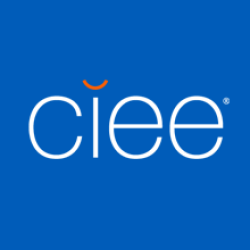Introducing the CIEE Health Risk Index
We know that in response to COVID-19, virtually every organization is developing strategies and contingency plans to sustain its mission in a responsible way during these unprecedented times. The field of study abroad and international exchange must also adapt and respond to the changing global landscape as we look ahead to continuing our mission to expand international understanding and support the training of future global leaders
Historically, our field has leaned on DOS and CDC risk levels that were updated periodically. While these indicators will continue to provide all of us with valuable information, it became clear in March 2020 that since the emergence of COVID-19 we need more information to assess risk.
At CIEE, we have expanded our lens for assessing risk to include a multitude of inputs and indicators to better inform our senior leadership team on the relative safety of supporting students and staff in a particular region, country, and city. The CIEE Health Risk Index (CIEE HRI, or HRI) is meant to broaden the perspective on overall risk that leaders can review in context with other risk factors. It is not meant to provide a single indicator of safety, but rather provides a summary of data points to inform decision makers.
We will regulary share the updated CIEE Health Risk Index to examine certain health trends and safety indicators at CIEE locations institution assess risk around upcoming CIEE Study Abroad programs.
The CIEE HRI is a score that represents one measure or assessment of virus risk, as well as the impact of government regulations and necessary risk mitigation strategies on our ability to deliver a program that meets our high standards for safety, academic rigor, and enriching intercultural experiences.
The CIEE HRI is calculated using multiple metrics (including prevalence of the virus, infection rates, transmission types, slope of new daily cases and mortality rates, health infrastructure ratings, and more) derived from multiple sources (WHO, Johns Hopkins, Worldometer, Department of State, Centers for Disease Control, DOMO, Global Health Survey, paid and open source intelligence services, and our own analytical tools).
Please note, the HRI is just one of the tools CIEE is using to evaluate the viability of programming at a location. The numbers do not necessarily represent absolute level of risk, nor do certain numerical scores trigger a program cancellation or guarantee a program will run.
We will be sending an update of this HRI graphic to our institutional partners biweekly. In addition, we will be convening groups of representatives from the CIEE Academic Consortium to share best practices at their organizations and to provide feedback on the HRI. As the weeks and months pass, we anticipate that our risk assessment methodology and visualization will evolve as new information becomes available and new trends emerge.
If you are interested in receiving the biweekly HRI report, please contact your Manager of Institutional Relations.
--Updated May 29, to reflect change of report distribution from weekly to biweekly--
